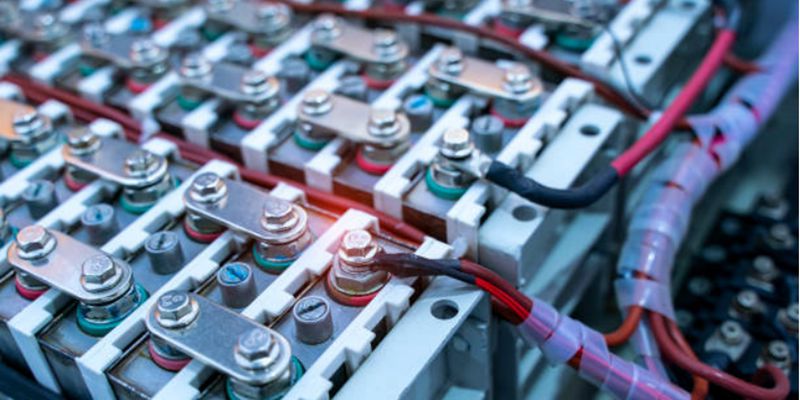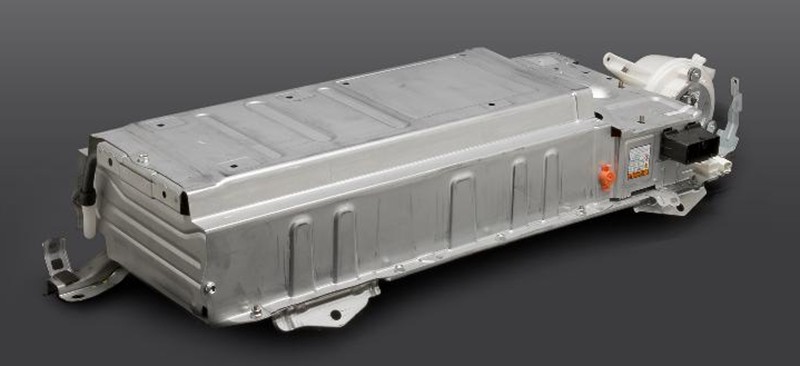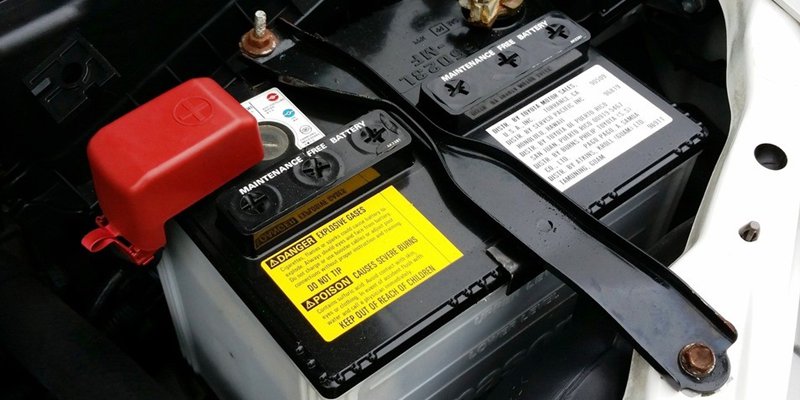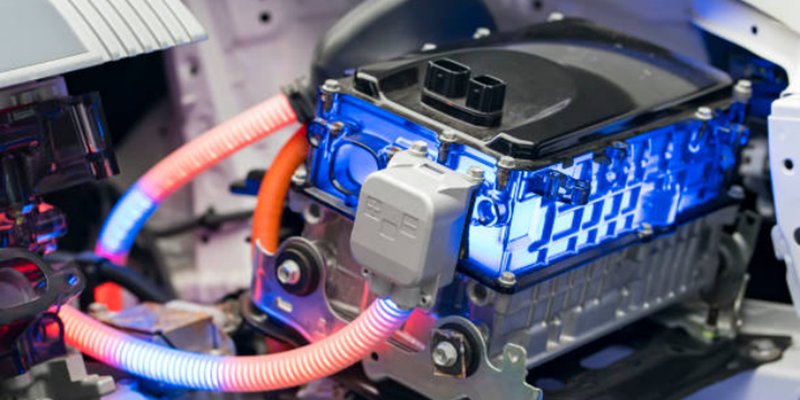Hybrid cars allow owners to have the feel of operating an electric car. This battery device powers the electric motor, enabling the smooth running of the car with reduced emissions. However, the vehicle still has an internal combustion engine it switches to, particularly when running at high speeds or high load conditions.
This article focuses on the operations and functions of hybrid car batteries, including their types and lifespan. Read ahead!
What is a Hybrid Car Battery?
A hybrid car battery powers the electric motor of a hybrid vehicle. It shares similarities with an internal combustion engine (ICEV) battery and a pure electric vehicle battery (EV).
Like the battery of a typical EV, it is rechargeable and aids in powering the car’s electric motor, propelling the vehicle, and acting as an energy source for other car electrical components. However, the main function of a hybrid car battery is to assist the combustion engine, it serves as the vehicle’s primary energy storage unit.
The hybrid car battery stores energy generated by the car’s electric generator and regenerative braking system and releases it when the vehicle requires it to power the electric motor. Therefore, it helps the car operate with improved fuel efficiency, reducing emissions and providing the combustion engine with electric power.
 Working Principles of Hybrid Car Batteries
Working Principles of Hybrid Car Batteries
Like all battery types, batteries for hybrid cars operate based on the principle of electrochemistry. Chemical reactions within the batteries are the operating principles for their ability to store and release electrical energy.
However, we must emphasize that hybrid cars can operate without batteries and run as a complete combustion engine. Likewise, it could run solely on electric power devoid of the fuel engine. During such operation, the battery delivers power to the electric motor, propelling the engine.
However, the battery tends to function more as a supplementary energy source than the primary one. Even when the car is running on the combustion engine, provided the battery has significant energy, it gives support, optimizing fuel efficiency and reducing emissions.
The combustion engine and the electric motor operate in a mutualistic relationship. Each system works hand in hand to ensure proper vehicle operation by balancing the energy sources for car performance.
Typical Components of Hybrid Car Batteries
Components of hybrid car batteries vary depending on the type and model of the vehicle. However, below are the standard components of a hybrid car battery.
Electrode
The electrodes – usually the positive (anode) and the negative (cathode) – are a common feature of all battery forms, regardless of car type. It is where the chemical reaction of oxidation or reduction occurs in the battery.
The cathode, usually made of a metal oxide, such as lithium cobalt oxide (LiCoO2) in lithium-ion batteries, is where the reduction reaction occurs. On the other hand, oxidation reactions happen at the anode. It is usually composed of materials like graphite that can intercalate with lithium ions in lithium-ion batteries.
Separator
The separator is a permeable membrane. As the name suggests, it separates the two electrodes – the positive and negative electrodes – in the battery. However, it is a link, allowing ions to flow within the electrodes and preventing electrical short circuits. In the battery, ions flow from the cathode – during reduction – to the anode, causing oxidation, as in a typical electrochemical cell.
Electrolyte
The battery’s electrolyte is the conductive solution or gel that aids in moving the ions from the positive cathode to the negative electrode during the battery’s operation. Since batteries are advanced electrochemical cells, they require an electrolyte for power generation and optimal functioning.
Current Collector
The current collector is a conductive substrate, usually made of a metal foil like copper or aluminum, acting as a conduit. As the name suggests, it collects electrons from the chemical reaction and delivers them to the external circuit, where they help power the vehicle’s electrical components.
Battery Box
The battery box is the external shell that encloses the battery components. It is a protective covering offering structural support and heat management for the battery’s internal features. A typical hybrid or pure EV battery box design is usually made of plastic materials to act as electrical insulation, ensuring the safety and reliability of its operation within the vehicle.
Other Typical Components of a Hybrid Battery
- Battery Cells: They are the basic unit for storing electrical energy within the battery. The cells in a hybrid engine battery are usually arranged in modules or packs.
- Cooling System: Most batteries for hybrid cars often have a cooling system that helps regulate the battery’s temperature and prevent overheating, which can degrade the battery’s performance and lifespan.
- Battery Management System (BMS): The BMS monitors and manages the performance and health of the battery pack. It optimizes the battery charging and discharging process, ensures safe operation, and protects the battery from potential issues of overheating and overcharging.
Types of Hybrid Car Batteries
Car hybrid batteries come in different designs, each offering specific benefits with some cons. However, the three most common batteries are lithium-ion, nickel-metal hydride, and lead-acid batteries.
Below, we will examine each of these batteries.
 Lithium-ion (Li-Ion) Batteries
Lithium-ion (Li-Ion) Batteries
The Li-ion battery features a low-density power pack with a simple design but possesses high-energy storage capacity. The low weight significantly makes it a readymade choice for EVs and high-end vehicles. Moreover, they have quick charging capabilities, with little to no discharge rate. This feature helps ensure that car owners can charge for a little while, yet experience longtime pure electric driving.
on battery is its high cost. But they are cost-effective, considering they can last for up to a decade, particularly with good management and maintenance practices.
 Nickel-Metal Hydride (NiMH) Batteries
Nickel-Metal Hydride (NiMH) Batteries
Nickel-metal hydride batteries are also the common battery for hybrid cars. They have become a staple in these dual-engine cars because they provide the perfect combination of cost-effectiveness, durability, and energy capacity.
Indeed, they provide lower energy density compared to Li-ion batteries. However, they are cheaper, more effective, and more environmentally friendly. Moreover, NiMH batteries feature a good life cycle and are thermally stable. Unlike Li-ion batteries, they do not require a complex cooling system to prevent overheating.
In addition, they are safe and recyclable and support vast production in hybrid vehicles. The major shortcoming is its bulky nature, ensuring they are heavier, and increasing the overall car weight.
 Lead-Acid batteries
Lead-Acid batteries
Lead-acid batteries are the least common in hybrid vehicles. However, they are the old type of car hybrid batteries, primarily because of their long history in automotive car applications. In fact, they are the cheapest option of all three common battery types. However, they are bulkier than the other two batteries, increasing the car’s weight.
Also, compared to NiMH and Li-Ion batteries, they provide a less pure electric driving experience. These drawbacks have made them a less favorable option in hybrid vehicles. Another shortcoming of the lead-acid battery in hybrid cars is its lesser efficiency and high emissions generation.
How Long Do Hybrid Car Batteries Last?
The lifespan of hybrid car batteries depends on various factors, with the battery type playing a significant role in the energy capacity. For example, you do not expect a Li-ion battery to have the same durability as a lead acid battery.
That said, upon proper usage, with adequate servicing and maintenance practices, a lithium-ion battery may last between 100,000 miles and 150,000 miles. This suggests it lasts 10 to 12 years or even more. In addition, the NiMH battery is pretty close, having a lifespan of up to 8 to 10 years. However, as we mentioned earlier, lead-acid batteries are typically less durable, with a lifespan of 3 to 4 years.
 What Factors Affect the Lifespan of Hybrid Car Batteries?
What Factors Affect the Lifespan of Hybrid Car Batteries?
The type is the main factor depending on the lifespan of hybrid car batteries. We already discussed how this influences battery longevity. However, other factors may determine the battery lifespan, which includes the following.
Usage Patterns
This talks about how often you drive the vehicle, the driving conditions, and the car’s mileage over time. All these factors influence your battery’s capacity.
For example, routine driving on a highway, where you maintain a particular speed over extended periods, puts less strain on your battery than driving across the city. Stop-and-go city driving, or driving in a routine traffic environment, puts more strain on your battery, reducing its lifespan.
Maintenance Practices
Engaging in regular maintenance, including proper charging, and timely car servicing, among other beneficial habits that promote the car’s performance improves your battery. All these practices help to enhance your battery life, prolonging its lifespan. On the other hand, neglecting maintenance results in premature battery failure, degrading its lifespan.
Environmental Conditions
Extreme temperature conditions are not beneficial to your battery. Routine driving in extreme cold or hot environments strains your hybrid engine battery, diminishing its performance and longevity.
Generally, a high-temperature climate increases the risk of overheating, accelerating the battery’s degradation. Likewise, cold temperatures make the battery do more work, reducing its efficiency.
 Compare Hybrid Car Battery and Pure Electric Car Battery
Compare Hybrid Car Battery and Pure Electric Car Battery
We mentioned earlier that batteries for hybrid cars and pure EV batteries share some similarities. However, they are distinct, just as the overall car operations differ. Below, we explore the similarities and differences between car battery types under the following content.
Working Principles
Unlike a hybrid car, the electric vehicle requires only the battery to operate. Therefore, if the battery is out of power, the car can’t function, which is the main distinction between pure EVs and a hybrid car. The hybrid vehicle can run as an all-electric or full-combustion engine and operate as a dual engine, each supplementing the other.
Functionality
Hybrid car batteries are a supplementary power source for the vehicle, while electric cars are the car’s primary power source. Pure electric vehicles require the battery’s energy for electric propulsion and the entire running of the car. On the other hand, a hybrid vehicle can utilize the internal combustion engine to operate the engine independently of the electric motor.
Role of Regenerative Braking
Hybrid car batteries recharge when the car decelerates, and brake through regenerative braking. The kinetic energy is changed into electrical energy, and stored for future use. Pure-electric vehicles also share this similarity, in that when the engine decelerates, it’s able to convert the kinetic energy to electrical for storage.
Power Balancing
A typical hybrid vehicle battery has a management system that regulates power flow between the combustion engine and the electric motor, helping ensure optimum vehicle performance and efficiency. Pure electric vehicles do not necessarily possess this feature. However, their battery management system is sophisticated enough to aid in balancing power output across every car system.
WayKen: Your Expert Partner for EV and Hybrid Car Components
Are you looking to replace a defective car part, customize, or improve specific car features? WayKen is your expert partner for customizing car parts to meet your specific requirements.
Whether it is a battery box case, headlights, car lens, dashboards, or body panels, WayKen boasts highly skilled machinists and comprehensive machining capabilities to support your car projects.
Conclusion
While hybrid cars can operate independently without needing a battery, they help ensure proper car functioning, increasing fuel efficiency and reducing emissions. It’s the battery that helps power the electric motor, differentiating a hybrid car from an internal combustion engine. When the battery is in full operation, it gives you the feel of driving a typical electric vehicle.
FAQs
How Do You Charge the Car Battery of a Hybrid Car?
Generally, the car battery of a hybrid car charges through the regenerative braking process. When running on the combustion engine, it also can generate electricity to recharge the battery. However, there are special hybrid vehicles called plug-in hybrid cars that support charging through an external electric outlet, similar to charging pure electric vehicles.
How Do You Replace a Defective Hybrid Car Battery?
Replacing a hybrid vehicle battery varies depending on the vehicle’s model and battery type. First, you want to be sure the battery is drained. Then, you need to consult a qualified technician to help with the hybrid battery replacement. The process simply involves disconnecting the power source, removing the old battery, installing the new one, and testing it to ensure it’s proper battery replacement.
How Does the Car Switch From Combustion Engine to Electric in a Hybrid Car?
The transition from combustion engine to electric driving is automatic in a hybrid vehicle. The vehicle’s powertrain control system is responsible for switching between driving modes. It monitors specific parameters, such as driving speed, battery charge levels, loads, etc., and determines the more efficient driving mode that suits the vehicle.




